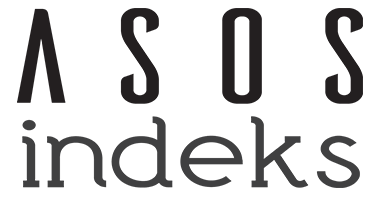A Metaphor Study On the Perception of the Earthquake, The Location and The Future of the Teachers Who Experienced The 6 February Kahramanmaraş Earthquake
Keywords:
Earthquake, Metaphor, TeacherAbstract
Turkey experienced two major earthquakes on 6 February 2023 with epicentres in Pazarcık and Elbistan districts of Kahramanmaraş, respectively. In the 11 provinces affected by these two major earthquakes, a severe picture emerged that interrupted human life in terms of socio-economic, psychological and spatial aspects. The negative effects of earthquakes, which resulted in great damage and losses, continue for many years from the moment they occur and are not erased from the memory of individuals. In this study, metaphors were used to determine the heavy pictures experienced by the people who experienced the earthquake of 6 February, which was described as the "Disaster of the Century", and to analyse the psychological situation they were in, and teachers who experienced the earthquake were selected as the study group. Based on the situations in which the teachers are in, it is foreseen that they can also be decisive for the improvement of other individuals. According to the data obtained from 164 teachers participating in the study, the participants produced 65 metaphors for the concept of earthquake, 74 metaphors for the concept of future and 86 metaphors for the concept of home. In line with the metaphors created by the participants, it is seen that the earthquake is perceived as a doomsday-like effect, helplessness and disaster; the future after the earthquake is perceived as uncertainty, hopelessness and pessimism; and the place of residence is perceived as an unsafe, fearful grave.
References
AFAD. (2018). Disaster management and natural source disaster statistics in Turkey. Ankara: Disaster and Emergency Management Presidency.
Aksoy, B. (2013). Qualitative examination of the perceptions of 9th grade students who experienced the earthquake towards the concept of "earthquake". ZeitschriftfürdieWelt der Türken, 5(1).
Aksoy, B. & Sözen, E. (2014). Examination of high school students' views on earthquake education in geography course in terms of various variables (Düzce province example). Uşak University Journal of Social Sciences, 7(1), 279-297.
Aydın, F. & Coşkun, M. (2010). Observation of thestudents' "earthquake" perceptionsbymeans of phenomenographicanalysis (primaryeducation 7th grade - Turkey). International Journal of thePhysicalSciences.5(8), 1324-1330.
Baytiyeh, H. & Naja, M. (2013). Promotingearthquakedisastermitigation in Lebanonthroughcivicengagement. Disaster Prevention and Management, 22(4), 340-350.
Bozdağ, B. & Dinç, F. (2020). ThePerceptions of PhysicalEducationTeacherCandidatestowardstheConcept of DistanceEducation in the Covid-19 Process: A MetaphorStudy. International Journal of EurasianEducationandCulture, Issue: 11, pp. (1954-1980).
Bozkurt, A. (2020). Images and perceptions of primary school students towards distance education during the coronavirus (Covid-19) pandemic: A metaphor analysis. Uşak University Journal of Educational Research, 6(2), 1-23.
Büyüköztürk, Ş., Çakmak, E., Akgün, Ö. E., Karadeniz, Ş. & Demirel, F. (2016). Scientific research methods [Scientificresearchmethods] (22nd edition). Ankara: Pegem A Publishing.
Creswell, J. W. (2007). Research design: Qualitative, quantitative, and mixed methods approaches. California: Sage Publications Inc.
Creswell, J. W. (2012). Qualitative inquiry and research design: Choosing among five approaches. Sage Publications.
Değirmenci, Y. (2019). Investigation of the metaphors developed by prospective primary school teachers about the concept of "natural disaster". International Journal of Geography and Geography Education, (39), 83-94.
Demirkaya, H. (2007). Primary School Students' Perception of Earthquake Concept and Their Views on Earthquake. Mehmet Akif Ersoy University Faculty of Education Journal, (8), 68-76.
Doğan, M., Nacaroğlu, O. & Ablak, S. (2021). Examining the metaphorical perceptions of secondary school students who experienced the Sivrice Earthquake about earthquake: The Case of Malatya Province. Dokuz Eylül University Buca Education Faculty Journal, (51), 384-402.
Erkal, T. & Degerliyurt, M. (2009). Disaster management in Turkey. Journal of Eastern Geography, 14(22), 147-164.
Ergünay, O. (2008, September 20). What is Institutional Structuring and Legislation in Disaster Management? How Should It Be? Problems and Solutions While Waiting for Istanbul Earthquake. Book of Proceedings, CHP Istanbul Earthquake Symposium, Istanbul.
Hacıfazlıoğlu, Ö., Karadeniz, Ş. & Dalgıç, G. (2011). School administrators' perceptions of technology leadership: An example of metaphor analysis. Journal of Educational Sciences Research,1(1), 97-121.
Ministry of Interior (18.04.2023). https://www.icisleri.gov.tr/
İlerisoy, Z., Gökşen, F., Soyluk, A. & Takva, Y. (2022). Earthquake-induced secondary disasters and Turkey sample. Online journal of Art and Design (OJAD),10(2).
Izbırak, R. (1991). Earth Science Information. Istanbul: MEB Publications.
Karakuş, U. (2013). Investigation of Earthquake Perceptions of Students Who Have and Have Not Experienced Earthquake with Metaphor Analysis. Journal of Eastern Geography, 18(29), 97-116.
Kasapoglu, K. E. (2007). Earthquakes and what you want to know about Turkey. Istanbul: Berkay Ofset.
Kıvrak, O. (2019). Karabuk province earthquake awareness. (Publication No. 544266) (Master's Thesis, Karabuk University Institute of Science and Technology) .Council of Higher Education Thesis Centre, Turkey.
Lincoln, Y. S. &Guba, E. G. (2013). Theconstructivistcredo. California, CA: LeftCoastPress.
Nakajima, S. (2012). Earthquake and post-earthquake psychology. Okmeydanı Medical Journal, 28(2), 150-155.
Obara, K. and Kato, A. (2016). Connecting’s low earth quakes to huge earthquakes. Science, 353(6296), 253-257.
Özdemir, M. (2012). Investigation of High School Students' Metaphorical School Perceptions in Terms of Various Variables. Education and Science,3(163).
Özdemir, Ü., Ertürk, M. & Güner, İ. (2001). The importance of earthquake and ways of protection from earthquake damages in primary education. Journal of Eastern Geography, 7(7).
Özel, G. & Solmaz, A. (2012). Estimation of earthquake recurrence time in Turkey and investigation of seismicity by geotechnical regions with Markov Chain. Çankaya University Journal of Science and Engineering, (9), 125-138.
Özkul, B. & Karaman, A. E. (2007). Risk management for natural disasters. TMMOB Disaster Symposium Proceedings Book, 251-260.
Pampal, S. (1999). Earthquakes. İstanbul: Alfa Publications.
Patton, M. Q. (2002). Qualitative research and evaluation methods. Hershey: PA: Sage.
Patton, Q. M. (2014). Qualitative Research and Evaluation Methods (Translated by Bütün, M. and Demir, S.B) Ankara: Pegem Akademi.
Rij, E.V. (2016). An approach to the disaster profile of People's Republic of China 1980-2013. Emergency and Disaster Reports, 3(4), 1-48.
Saban, A. (2008). Metaphors Related to School. Educational Administration in Theory and Practice, 55(55), 459- 496.
Saban, A. (2009). Pre-service Teachers' Mental Images of Student Concept, Turkish Journal of Educational Sciences. 7(2), 281-326.
Shenton, A. K. (2004). Strategies for ensuring trust worthiness in qualitative research projects. Education for Information, 22, 63-75.
Sönmez, M. B. Psychological effects of earthquake, psychological support and coping with fear, TOTBID Journal 21, 337-343
Şahin, C. & Sipahioğlu Ş. (2002). Natural disasters and Turkey. Ankara: Gündüz Education and Publishing.
Tok, E. (2018). Preservice preschool teachers' perceptions of the game: An example of metaphor analysis. Kastamonu Journal of Education, 26(2), 599-611.
Turkish Language Institution (TDK) (20.04.2023). https://sozluk.gov.tr/
Downloads
Published
How to Cite
Issue
Section
License
Copyright (c) 2023 bilge seçil kahraman, Filiz Demirhan, Tuğba Eniş Erdoğan

This work is licensed under a Creative Commons Attribution-NonCommercial-NoDerivatives 4.0 International License.
For more information click here.






